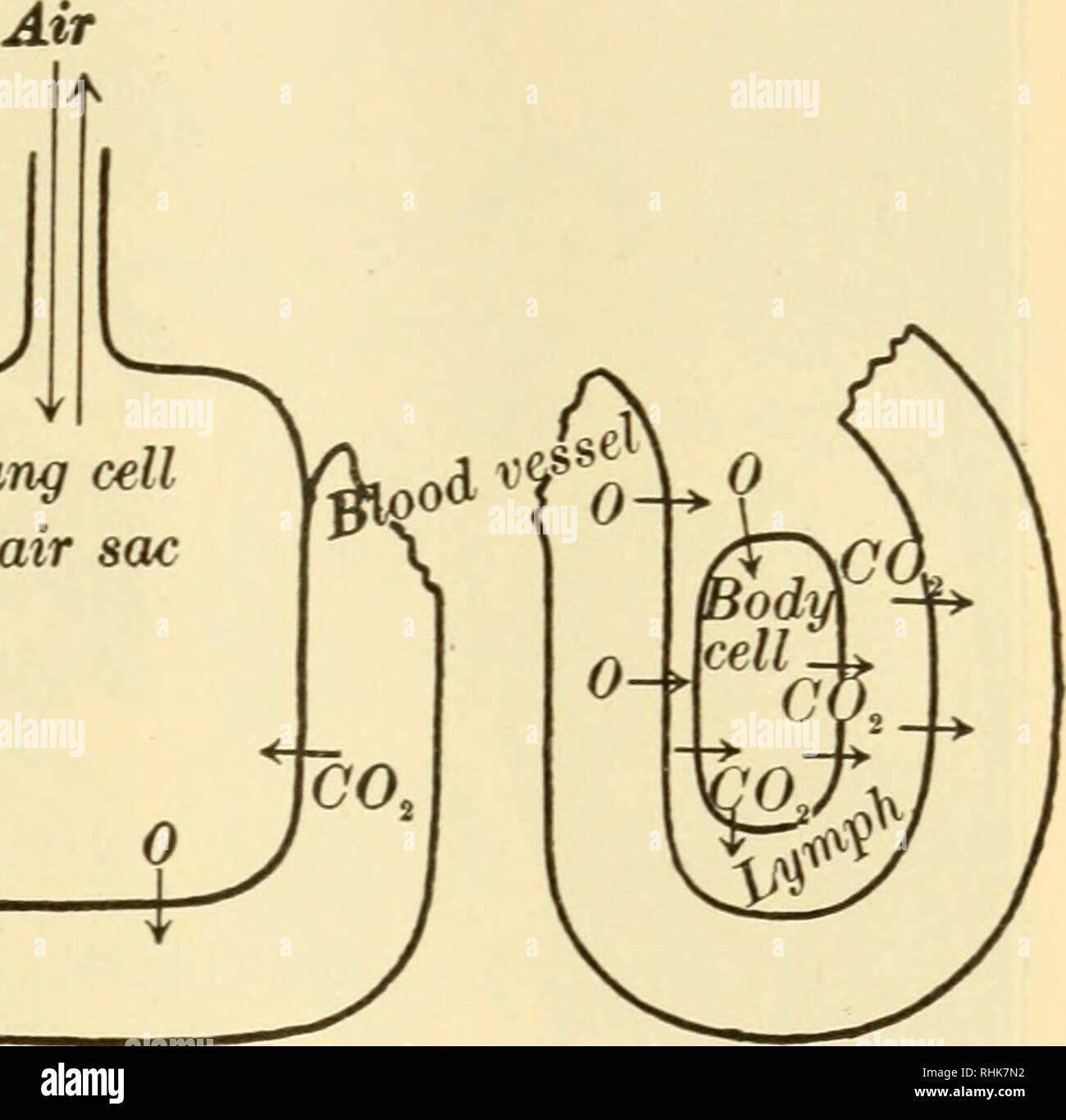. Biology and human life. Biology. THE AIR 163 t^^ to o o Lung cell or air sac 0 eral steps between the outside air and the Hving cells ; these are pointed out in the diagram (Fig. 85). 137. Control of breathing. When you wish to do so, you may hold your breath for a minute or two, or modify the rate and manner of breathing in other ways. Nevertheless our everyday breathing is an unconscious and involuntary proc- ess. The way you breathe is a mat- ter of habit; the best control comes from establishing sound habits.^ We need to practice correct breathing constantly rather than take special exer

Image details
Contributor:
Library Book Collection / Alamy Stock PhotoImage ID:
RHK7N2File size:
7.1 MB (165.1 KB Compressed download)Releases:
Model - no | Property - noDo I need a release?Dimensions:
1595 x 1566 px | 27 x 26.5 cm | 10.6 x 10.4 inches | 150dpiMore information:
This image is a public domain image, which means either that copyright has expired in the image or the copyright holder has waived their copyright. Alamy charges you a fee for access to the high resolution copy of the image.
This image could have imperfections as it’s either historical or reportage.
. Biology and human life. Biology. THE AIR 163 t^^ to o o Lung cell or air sac 0 eral steps between the outside air and the Hving cells ; these are pointed out in the diagram (Fig. 85). 137. Control of breathing. When you wish to do so, you may hold your breath for a minute or two, or modify the rate and manner of breathing in other ways. Nevertheless our everyday breathing is an unconscious and involuntary proc- ess. The way you breathe is a mat- ter of habit; the best control comes from establishing sound habits.^ We need to practice correct breathing constantly rather than take special exercises to make up for bad habits. There are three points in regard to which faulty breathing habits are very common. I. Mouth breath- ing. For several reasons we should acquire the habit of breath- ing through the nose rather than through the mouth (see Fig. 86). a. By means of the slimy mucus secreted by the lining of the nostrils and by means of the hairs in the front part of the nos- trils the dust particles are filtered out of the air we breathe. CO, . Fig. 85. External and internal respiration The external respiration of the body consists of (i) the muscular movements of the ribs and the diaphragm; (2) the air movements into and out of the lungs; and (3) the osmotic movements of the gases into and out of the blood, through the linings of the air sacs. The inter- nal respiration of the body cells consists of the exchange of gases between the cells and the blood or lymph ^The rate of breathing is controlled automatically from certain nerve centers, which are influenced by the proportion of carbon dioxid in the blood. When you run fast, or exert yourself in some other way, the gas exchange in the lungs (and so the gas exchange in the blood and in the working cells) is increased; when you lie still, the gas exchange is reduced.. Please note that these images are extracted from scanned page images that may have been digitally enhanced for readability - coloration and appearance o